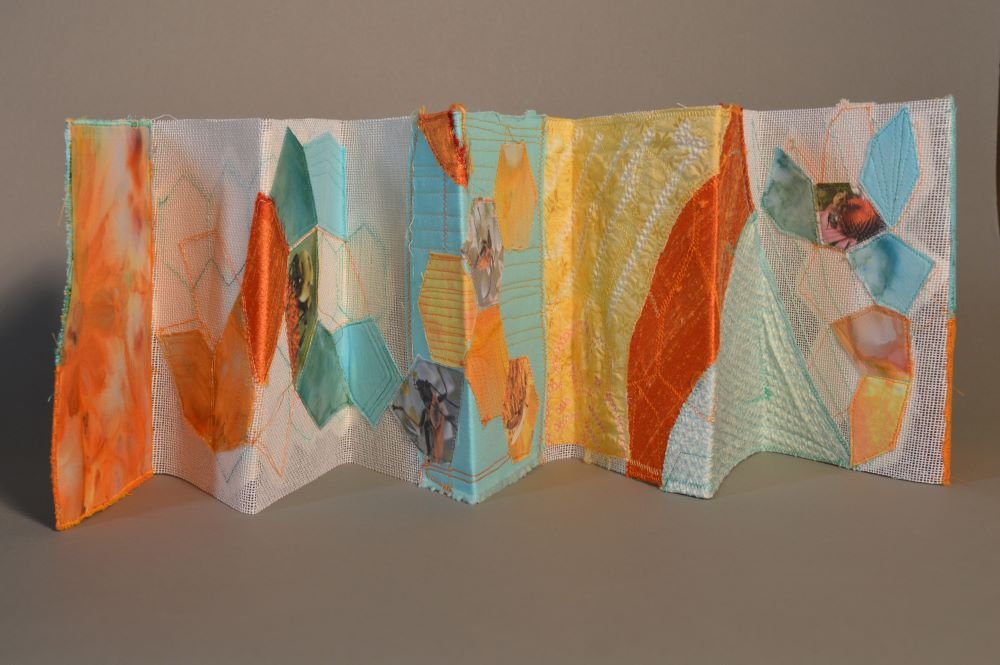Wind: Turbine and Wind Pollinators
Previously, I blogged about different techniques involving Inktense, photos, and hand dyed fabrics. I used the products listed below: Inktense, photo fabric and Procion MX dyes. (I signed up as an Amazon Associate and may earn from qualifying purchases.)
I used these products to create the works: Wind Pollinators and Turbine. You can see my previous posts about the techniques.
In my art quilt, Turbine, I tried to convey the impact of global warming on wind. Turbine visualizes the mixture of hot and cold air which causes the formation of tornados and strong winds. Wind is created by the relationship between air pressure, temperature, and volume. If temperature remains constant, the relationship between the volume and pressure is constant. But, as temperatures increase due to climate change then we can expect to see an increase in wind and air turbulence.
The base layer is an ice dyed quilting cotton featuring swirls of oranges and blues. This is overlaid with raw edge applique pieces of Essex linen and quilting cotton. These pieces represent individual masses of air sweeping across the work. Finally, this is overlaid with paisley free motion quilting with pentagonal motifs.
Here, you can see a close up of the interlaced applique pieces. This area features a hexagonal structure.
Turbine: An art quilt with blues and oranges featuring raw edge applique and free motion quilting.
The next piece that I created is called Wind Pollinators. This piece incorporates hand dyed fabrics, photos, and Inktense.
Pollination can be wind driven or insect driven - but the insects also rely on the wind and air as a medium of transport. As the climate changes and our environment heats up, how will both forms of pollination be affected? The increasing difference between the current air temperatures and the historical temperature is referenced by the color contrasts. The hexagons and pentagons recognize the effect of the changing air temperatures on bee colonies which are vulnerable to changes in the air.
Wind Pollinators - Close up
Wind Pollinators - Art Book - Front





